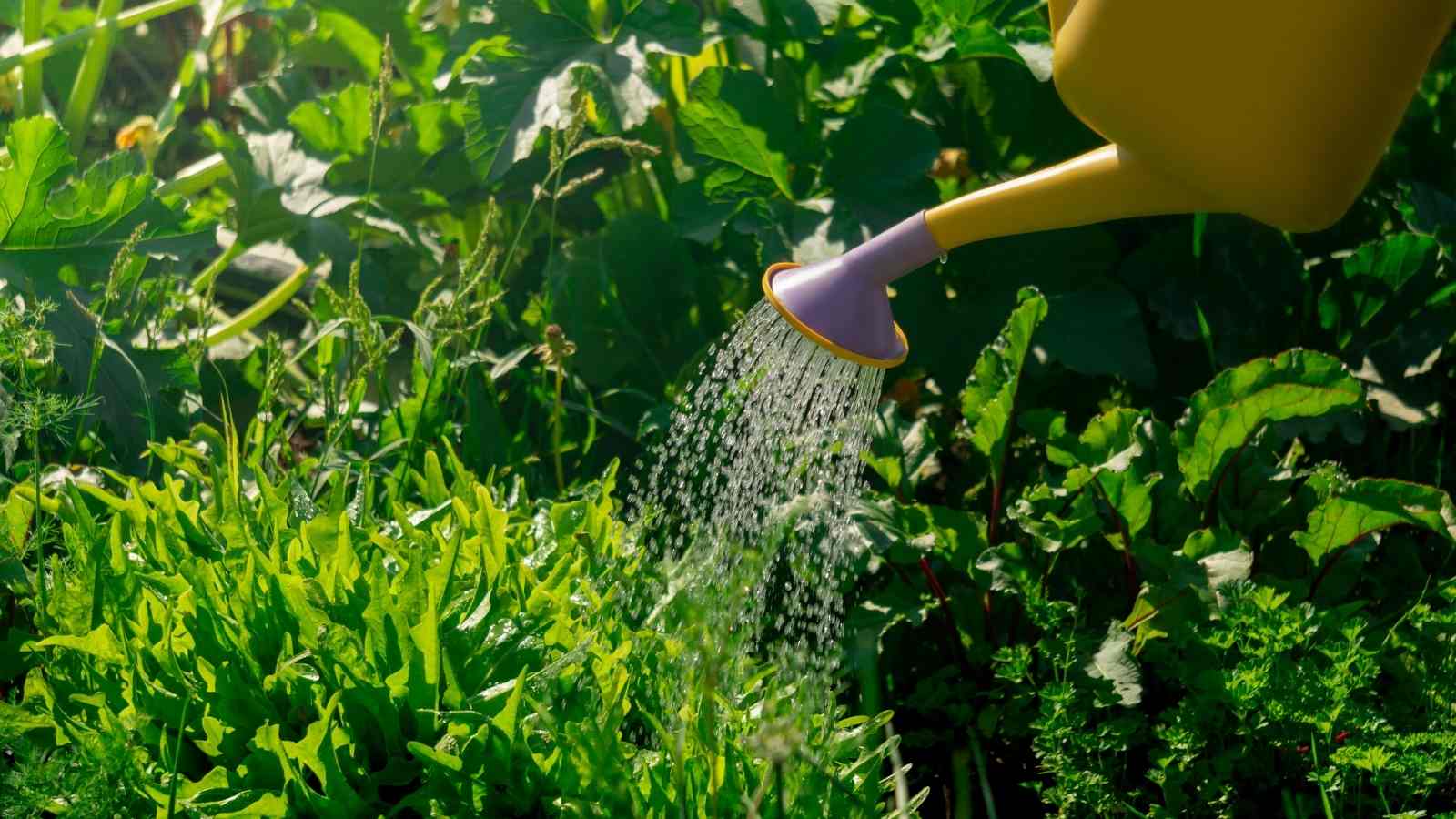Watering is important for any landscape. However, if you’re growing an edible garden, then it should be at the top of your to-do list.
Most edibles require regular watering schedules. If you’re lucky to live in areas where summer rainstorms are common, nature will provide enough to keep your garden healthy and happy. But if you live in a country with an arid or dry weather like Australia, then you’ll need to do more to have a good harvest.

Regardless of the weather, here are some watering guidelines and tips you need to know for your edible garden.
Jump to:
1. Consider Collecting Rainwater
Collecting rainwater saves your precious drinking water. Other than that, rainwater has benefits to plants that tap water can’t deliver.
It mostly has something to do with chemistry. In tap water, chlorine and fluoride are added to disinfect water and prevent cavities. However, edible plans are prone to chlorine toxicity and cause burnt, spotted, or discolored leaves or stressing fruit and veggies, making them become diseased. Captured rainwater doesn’t have these additives and pollutants associated with surface and groundwater.
So, the next time it rains, you can collect water off your roof using rain barrels. Or you can install a dedicated rainwater harvesting system. For example, the Water Tank Factory offers numerous rainwater storage solutions ideal for irrigating your edible garden.
2. Know Your Plants’ Watering Needs
In general, most edible plants need regular watering and won’t grow lushly if the soil dries out too much in between.
However, it’s not true for all of them. Thus, you need to research and understand more about your plants. For instance, quinoa, mustard greens, and tomatoes don’t like too much water. On the other hand, plants, like cole, peas, and beets, need extra watering sessions.
3. Understand Soil Type
Other than your plants’ watering needs, you need to know more about your soil type. Ideal edible garden soil is a rich, easy-to-work loam that’s porous enough for water to slowly and easily seep down, but it’s heavy enough to keep water at the root level.
But if you have a different soil type, you’ll have to plan your watering schedule. For instance, heavy clay soil absorbs water very slowly. With this type of soil, it’s easy for water to run off before it even penetrates the ground. Therefore, you need to keep a low flow, almost a trickle, when watering your plant in heavy clay soil. Also, you’ll have to water less often since it is slow to drain from the roots.
In contrast, sandy soil tends to be porous and loose. It absorbs water easily but allows water to easily pass by the roots and drain away. So, if you have this kind of soil, you will need to water more often to ensure that the soil just above the roots stays wet.
4. Always Water In The Morning
You want to give your edible plants a drink at the start of the day. Consider this as your plants’ morning caffeine jolt. When you keep plants hydrated in the morning, they can fight the heat of the day. In addition, it gives the foliage time to dry in the sun, preventing diseases.
Now, if you can’t water your plants in the morning, water them in the evening, particularly once things have started to cool down. Just make sure that you don’t get the foliage too wet, particularly if your edible plants are prone to fungus.
At midday, you can water the plants that are wilting significantly under direct sunlight.
5. Increase Watering When Plant Is Growing
Most edible plants will need increased water consumption when they are fruiting or flowering. This ensures that the plant has enough nutrients to support fruition.
Once the edibles have finished producing, you can cut back and go back to your normal watering routine.
6. Water Slowly And Consistently
Even if you’re in a hurry, you need to water your edible garden slowly. Spraying a full blast of water on your plants can wash away the dirt that provides plants with enough water. You want to take it easy and allow the water to fall gently on the plants and soil.
In addition, you want to keep a consistent watering schedule. Edible plants do best when they are on a regular watering schedule instead of a seesaw approach of overwatering and then leaving them dry for the next days.
7. Add Watering Basins
If you want to water your edible garden effectively, you can add water basins around plants. This allows water to slowly permeate the soil and reach the deepest roots.
Most gardeners use above-ground bags that fit around trees that offer the same benefit. This is particularly suitable for the newly planted trees. If you have larger watering basins, you can cover them with decorative rocks. The stones allow water to permeate the soil while adding a finishing touch to your landscape and protecting your plants from lawnmower blades.
Conclusion
Most people think that watering your edible garden is a no-brainer. However, with the above best practices and tips for watering your plants, you can save time and conserve water. Plus, you can ensure a luscious edible garden with an exceptional product. Truly, a win-win scenario.
